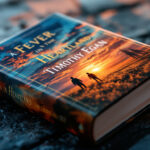How to Write a Book as a Beginner – A Step by Step Guide for Success
Writing your first book can feel exciting but also overwhelming. You might have big ideas but no clue where to start. The good news? You don’t need to be an expert to write a great book. With the right steps, anyone can turn their ideas into a finished project. This guide will help beginners like you walk through the process with clarity and confidence. Whether you’re aiming for fiction, non-fiction, or something in between, you’ll find practical advice to get words on the page and keep going.
Find Your Why
Every book starts with a purpose. Defining your purpose—your “why”—builds the foundation for everything else. Writing isn’t just a task; it’s a journey with direction. Without knowing what drives you, it’s easy to lose focus. Are you writing to inspire, teach, or share a story that only you can tell? Understanding your motives clarifies your path and keeps you grounded in moments of doubt. Let’s break it down further.
What’s Your Ultimate Goal?
Ask yourself this: What do you want to achieve with this book? Your goal might be personal satisfaction, building authority in a topic, or leaving a legacy. For some, it might be about connecting deeply with readers. Others might see it as a tool to amplify their voice.
Some examples of common goals include:
- Teaching or Educating: Do you have expertise others can benefit from? Teaching through writing helps deliver practical knowledge.
- Storytelling: Maybe there’s a personal or fictional story you can’t stop thinking about.
- Building a Career: Authors often use books as part of a larger career strategy, like coaching or speaking.
- Self-Expression: For many, writing is therapy. It’s a way to process ideas, emotions, or experiences.
Writing down your purpose works wonders. Seeing it in words makes it more real.
Who Are You Writing For?
Knowing your audience shapes how you write. If you’re unsure, think about who would benefit most from your book. Are you writing for:
- Beginners needing guidance?
- People facing a challenge you’ve overcome?
- Readers seeking entertainment or inspiration?
Consider this like cooking a dish—you tailor it based on the preferences of the guests you’re serving.
If you’re still stuck, explore resources like this guide on finding your why to dig deeper into identifying your purpose.
Fuel Motivation with Your Why
Writing isn’t always easy. Days will come when motivation feels far away. That’s when your “why” keeps you going. It serves as your compass and reminder of the importance of your work.
Here’s a quick exercise: Write down your reason on a sticky note and place it where you’ll see it daily. Simple but effective.
If you’re still struggling to define your “why,” check out insights on how writers can uncover their true motivations.
Stick to Your Vision
Your “why” isn’t just an anchor—it’s the soul of your book. Even if you revisit and refine it as you write, staying connected to that inner purpose helps ensure your project remains authentic. Can you visualize the finish line? That’s your ultimate reward, but it starts with understanding why you began.
Choose Your Book Idea
Every successful book begins with a strong idea. But picking that central theme can be harder than it sounds. If you’re overwhelmed with possibilities or unsure where to start, this section will guide you step-by-step to clarify your thoughts and focus on the perfect book idea.
Brainstorm and Mind Map
Brainstorming is like letting your imagination run wild on paper. One of the best tools for organizing your thoughts is a mind map. It’s simple, effective, and ideal for generating book ideas.
Start with a blank sheet of paper or a digital tool, and write your main theme or broad topic in the center. From there, draw branches with related keywords, subtopics, or questions. For example, if your book is about personal growth, potential branches could include “overcoming challenges,” “building good habits,” or “unlocking potential.”
Here’s how you can make the most out of mind mapping:
- Keep it visual: Use colors, images, and doodles to make your ideas stand out.
- Don’t censor yourself: Write down every idea, even the wild ones—they might lead to something amazing later!
- Ask yourself questions: What would excite your readers? What problems can you solve?
Tools like this guide on brainstorming with mind maps can help you learn how to structure your mind map and spark new ideas.
If you’re focused on fiction, try exploring characters, plots, and themes that have always intrigued you. For nonfiction, think about specific problems you can address, or expertise you’d love to share.
Narrow Down to One Idea
After brainstorming, it’s time to focus your energy. Here’s where you filter through your ideas to find the one you’re most passionate about. A concentrated concept will make your writing process much smoother.
To narrow down your options:
- Rate your ideas: Score them based on how much they excite you or their relevance to your target audience.
- Think long term: Can you commit to writing and researching this idea for months?
- Simplify: Distill your idea into a single, clear sentence. If it feels strong, you’re on the right track.
For example, instead of “writing about lifestyle changes,” refine it—“a beginner’s guide to building habits for a healthier life.” With a defined focus, your motivation and execution improve.
For more strategies, check out how to narrow down your story idea.
Getting clear on your topic saves you from overwhelmed starts or mid-project pivots. As a beginner, choosing that one exciting, doable idea sets the stage for writing success.
Create a Writing Plan
A clear writing plan is essential to maintaining focus and achieving your book-writing goals. Think of it as your personal roadmap, guiding you through the journey from idea to draft completion. This step-by-step structure will help you stay consistent, motivated, and organized.
Set Word Count Goals
Breaking down the big task of writing a book into smaller, measurable goals makes the process less intimidating. Start by setting a total word count target for your book. For example, a typical novel might be around 70,000 to 90,000 words, while a non-fiction guide could range between 40,000 and 60,000 words. Once you have a target, divide it into daily or weekly chunks.
Here are some tips for setting manageable word count goals:
- Start Small: If you’re new to writing, aim for 300–500 words a day. Gradually increase as you build momentum.
- Use a Weekly Target: If daily goals feel overwhelming, aim for a weekly total instead. For example, 3,000 words a week means about 425 words daily—allowing flexibility.
- Track Your Progress: Use tools like a spreadsheet, app, or even a journal to monitor your word counts. Seeing your accomplishments gives an extra boost.
For detailed strategies, check out this guide on achievable word count goals. It offers more insights on creating goals that fit your lifestyle and writing pace.
Reserve Dedicated Writing Time
Consistency is key when working towards completing a book. Establishing a daily or weekly writing schedule ensures you stay on track. Treat your writing time as non-negotiable—just like an important meeting or appointment.
Here’s how to build a sustainable writing routine:
- Choose Your Best Time: Are you an early bird or a night owl? Write during hours when your energy peaks.
- Eliminate Distractions: Create a quiet, focused environment. Turn off notifications, let family members know you’re unavailable, and set boundaries.
- Stick to Short Sessions: If long blocks feel daunting, write in 25- or 30-minute intervals. Use a timer to stay productive.
- Plan Ahead: Block writing time on your calendar. Seeing it scheduled reinforces commitment.
For more tips on structuring your writing schedule, explore this article on creating a consistent routine. It provides practical advice for finding a rhythm that works for you.
Integrate these practices, and over time, writing will feel less like a chore and more like a habit. Trust the process, and you’ll see steady progress.
Outline Your Book
Before you start writing, having a clear plan is crucial. Outlining your book helps you stay organized, avoid getting lost, and ensures that your ideas flow logically. Even if the process seems intimidating, taking it step by step makes it manageable and boosts your confidence. Let’s explore how to outline effectively for structure, character, and plot development.
Choose an Outline Method
There isn’t a one-size-fits-all approach to outlining, and that’s okay. The right method depends on your style and book genre. Here are a few popular techniques you can use:
- The Three-Act Structure: Break your book into three main sections—setup, conflict, and resolution. This method works well for most stories and ensures that critical moments happen at the right time. Find detailed guidance on how the Three-Act Structure works.
- The Hero’s Journey: This classic framework is ideal for adventure or transformation stories. It follows a protagonist through ordinary life, challenges, growth, and a final return with newfound wisdom. Learn more at Hero’s Journey Guide.
- Chapter-by-Chapter Outline: This is a straightforward way to plan your book. Write a brief summary of the events or key points for each chapter. It’s flexible and allows you to tackle writing one section at a time.
Choose whichever method feels natural, and don’t be afraid to combine techniques. The goal is to create a roadmap that keeps you focused and inspired.
Build Character Profiles
If you’re writing fiction, compelling characters are at the heart of your story. They should feel real, relatable, and consistent. To achieve this, create detailed character profiles covering various aspects of their lives.
Here’s what to include:
- Basic Details: Name, age, gender, and physical description.
- Backstory: What shaped their personality, choices, and goals?
- Personality Traits: Include strengths, flaws, quirks, and motivations. What drives their decisions?
- Relationships: Explore their connections, conflicts, and dynamics with other characters.
- Role in the Story: What purpose do they serve in driving the plot?
A profile acts as a reference so you can write your characters with depth and consistency. Want more guidance? Check out this step-by-step guide to creating character profiles.
Sketch Key Plot Points
Your plot is the backbone of your book. Outlining the major events ensures your story has direction and maintains the reader’s interest. Start by identifying key moments that will define your book’s structure.
Here’s how to sketch out key plot points:
- The Beginning: Set the stage. Who are your characters? What’s the inciting event that kicks off the story?
- The Middle: Plan the challenges, growth, and turning points. This is where characters face obstacles or learn lessons.
- The Ending: Create a resolution that ties up loose ends and delivers a satisfying conclusion.
If it helps, visualize your story like a roadmap. Each plot point acts as a destination, moving your characters closer to the final moment. For more strategies, check this guide on plotting a novel.
With your structure, characters, and plot points laid out, you’ll find it much easier to translate your ideas into compelling chapters. Planning may take time, but it saves you from frustration later.
Start Writing Your First Draft
Starting your first draft can feel like taking the first step on a long journey. Remember this: your draft doesn’t need to be perfect—it simply needs to exist. The aim at this stage is to prioritize progress over perfection. Write freely, embrace imperfections, and let your creativity flow without judgment. This is your moment to get the story or content out of your mind and onto the page.
Overcome Writer’s Block
Writer’s block happens to every writer at some point. Instead of letting it stall you, tackle it head-on with approaches that keep the momentum going.
Here are some simple strategies to break through writer’s block:
- Start with prompts: If you’re stuck, use writing prompts to ignite ideas. For instance, ask “What happens if my protagonist makes the wrong choice?”
- Skip challenging sections: Don’t force yourself to finish a tough paragraph or chapter. Move to an easier part and return later.
- Take short breaks: Short walks or a change of scenery can clear your mind and spark new ideas.
- Write poorly on purpose: Remove the pressure of perfection by writing “badly.” Fix it during editing.
Getting back into the flow is easier when you give yourself grace and try techniques tailored to your situation. For more practical tips, check out these ways to overcome writer’s block.
Stay Motivated
Staying motivated during the writing process is all about finding what works for you. Writing a book is a long project, and small wins keep the momentum alive.
Consider these methods to keep pushing forward:
- Find accountability: Share your goals with a friend, writing group, or online community. Having someone check in keeps you on track.
- Track progress: Use journals or apps to log daily or weekly achievements. Seeing progress builds confidence.
- Reward milestones: Celebrate when you hit specific goals, like finishing a chapter or writing 5,000 words. Small rewards—like a favorite treat or a mini-break—help you stay motivated.
- Visualize the finish: Picture holding your completed book in your hands. This mindset can brighten frustrating moments.
Remember, motivation sometimes fades, but building consistent habits will keep you writing long after the spark is gone. For more ideas, check out these ways to stay motivated while writing.
Your first draft isn’t about getting it right; it’s about getting it written. Focus on progress, not perfection, and keep moving forward!
Edit and Revise Your Work
Editing and revising are where your book truly comes to life. Writing the first draft is just the beginning. The next steps involve polishing, refining, and strengthening your manuscript until it’s ready for an audience. Think of this process as sculpting clay—you add and shape until the final product aligns with your vision. Let’s look at how to tackle it.
Self-Editing Tips: Focus on re-reading for structure, flow, and clarity before sharing with others
Before you hand your work off to anyone else, take some time to review it yourself. Self-editing helps you identify glaring issues and make necessary adjustments.
Some smart strategies for self-editing include:
- Take a break: Step away from your writing for a day or two. Returning with fresh eyes can reveal issues you missed.
- Read aloud: Hearing your words can help you catch awkward phrasing or areas that lack rhythm.
- Simplify your sentences: Cut unnecessary words. Shorter, clearer sentences are easier to read and more impactful.
- Focus on structure: Ensure your chapters flow seamlessly. Look for natural transitions between sections.
- Check for consistency: Verify names, timelines, and other details remain consistent throughout the manuscript.
For additional self-editing techniques, explore 10 Tips for Editing Your Writing. This guide offers actionable advice to sharpen your editing skills.
Seek Feedback: Encourage sharing drafts with peers or beta readers for constructive insights
Once you’ve polished your draft, it’s time to gather perspectives from others. Seeking feedback is one of the most effective ways to improve your book.
Who should you ask for feedback?
- Writing groups: Peers understand the challenges of writing and can offer helpful critique.
- Beta readers: These are individuals in your target audience who provide honest reactions and suggestions.
- Friends or family: Trusted allies can offer input, though their advice may lack objectivity.
When seeking feedback, be specific. Ask readers to focus on particular concerns, like pacing, character development, or plot holes. Also, be prepared to hear criticism—it’s part of growing as a writer. To learn how to effectively approach this step, check out How to Receive Honest Feedback on Your Writing.
Professional Editing: Explain the types of editing services available and when they might be necessary
Although self-editing and peer feedback are valuable, professional editors take your manuscript to the next level. They catch errors you may have overlooked and offer expertise tailored to your book’s needs.
Here are common types of editing services:
- Developmental Editing: Focuses on the big picture, like plot structure, pacing, and character arcs. This is ideal for major revisions.
- Copy Editing: Polishes grammar, sentence structure, and word choice to refine readability without altering your unique voice.
- Proofreading: Corrects typos, punctuation, and formatting errors. This step comes last to ensure the manuscript is error-free.
- Line Editing: Examines sentence flow, word usage, and narrative tone to enhance style and consistency.
When should you consider a professional editor? If you’re planning to self-publish or seek representation, working with an editor can elevate your book’s quality. Learn more about the Types of Professional Editing to determine what option aligns with your needs.
Investing time in these steps ensures your book stands out, whether it’s to agents, publishers, or readers.
Decide on Publishing Routes
Once you’ve written and revised your book, the next big decision awaits: how will you publish it? Choosing between traditional publishing and self-publishing is a significant step. Each route has its unique challenges and rewards. Let’s break them down to see which one suits your goals.
Traditional Publishing Basics
Traditional publishing remains a popular option for many authors, but it requires perseverance and preparation. Here’s what you need to know:
- Submitting to Publishers: Once you land an agent, they’ll help you submit your manuscript to publishing houses. Each submission goes through rounds of review. Don’t be discouraged by rejections—they’re part of the process. Patience is crucial here.
- Choose a Platform: Amazon Kindle Direct Publishing (KDP) is one of the easiest and most popular platforms. It lets you publish both eBooks and paperbacks. For a detailed guide, check out how to publish with Kindle Direct Publishing.
- Format Your Manuscript: Formatting is crucial for readability and professionalism. If you’re uploading to KDP, ensure your manuscript and cover meet their specifications. Learn more with this Amazon formatting guide.
- Create a Budget: While self-publishing gives you control, editing, cover design, and marketing often require professional help. Assess costs for these services upfront.
- Get ISBN Numbers: Some platforms provide free ISBNs, but owning your ISBN keeps you as the publisher. Research what works best for your needs.
- Create a personal website: This serves as your online home base. Include an author bio, details about your book, blog posts, and clear links to purchase your book.
- Social media presence: Platforms like Instagram, Twitter, LinkedIn, or TikTok provide huge opportunities to engage with readers. Share behind-the-scenes looks at your writing process, teasers, or even short videos about your book.
- Email list: Offer a freebie (like an excerpt or related resource) in exchange for email sign-ups on your website. This list will be your go-to for important announcements like book launches and sales.
- Set up pre-orders: Offer your book for pre-order leading up to your launch date. This builds anticipation and boosts early sales.
- Run giveaways: Host social media or email giveaways with a few free copies of your book. It’s a cost-effective way to gain exposure.
- Partner with influencers: Reach out to bloggers, bookstagrammers, or YouTubers in your niche for reviews or shoutouts.
- Plan a launch event: Whether virtual or in-person, book launches are great for engaging with readers and creating excitement. Consider reading excerpts, doing a Q&A, or signing copies.
- Use your network: Ask supportive friends, family, and peers to spread the word about your launch date.







